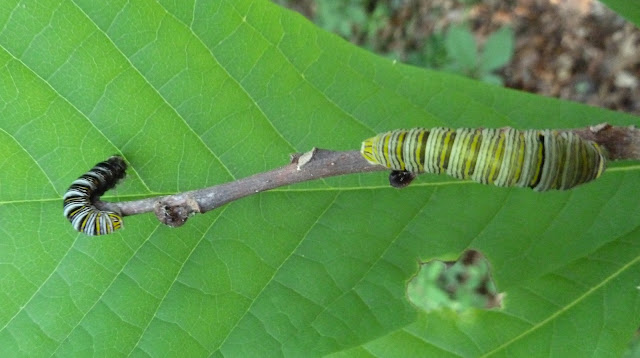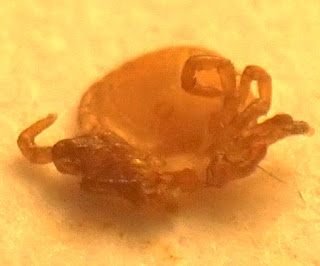 |
| Zebra ST depositing egg on a pawpaw. |
Thursday Barb saw a zebra swallowtail butterfly fluttering by, ignoring the fact that spring doesn't start until tomorrow. That got us wondering how much chance it would have to fulfill its adult mission in life, to reproduce. With no leaves in sight on the pawpaws (their only host plant) early flight seems futile. So we went to look at the pawpaw trees nearby.
The twigs on our pawpaws (Asamina triloba) are showing little brown furry flower buds swelling but no sign of the leaf buds opening. These will soon open up as little brown flowers that are stinky. This attracts flies and beetles which assume they are something dead but carry the pollen away.
This is were the flower gets interesting. Most plants are either monoecious (male and female flowers on the same plant) or dioecious (each plant has only male or female flowers). A few like the pawpaw are hermaphroditic. I will let Gardeningknowhow explain."The male parts of a flower are known as the stamens and anthers. The anthers contain the flower’s pollen. The female organs of a flower are known as the pistil. This pistil has three parts – the stigma, style, and ovary. Pollinators carry pollen from the male anthers to the pistil, where it then fertilizes and grows into seeds. Hermaphroditic plants have male and female reproductive organs within the same flower. They are sometimes referred to as bisexual or perfect flowers."
Now the pawpaw becomes even more interesting. The leaves and fruit contain acetogenins, including the neurotoxin annonacin which protect the plant from indiscriminate munchers but accumulate in the zebra swallowtail caterpillars and adults. These smells dissuade most predators, similar to the milkweed and Monarch association.
 |
| Zebra swallowtail caterpillars |
I suspect that Barb's zebra won't be successful, proving that the early butterfly doesn't always get the leaf. However there are a lot more that will be airborne in the next few weeks. You can see all the details of zebra swallowtail reproduction in this 2020 blog.



















